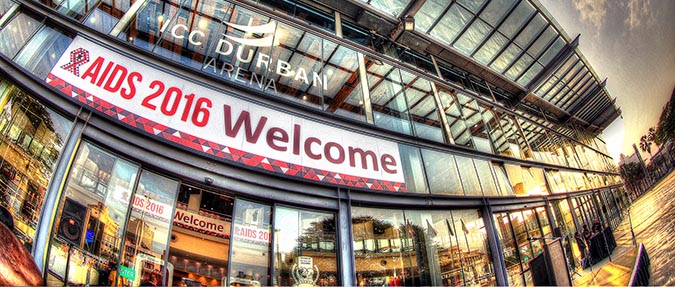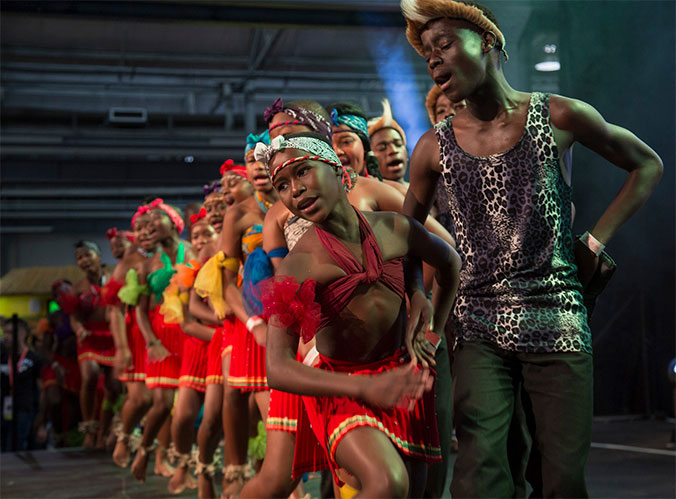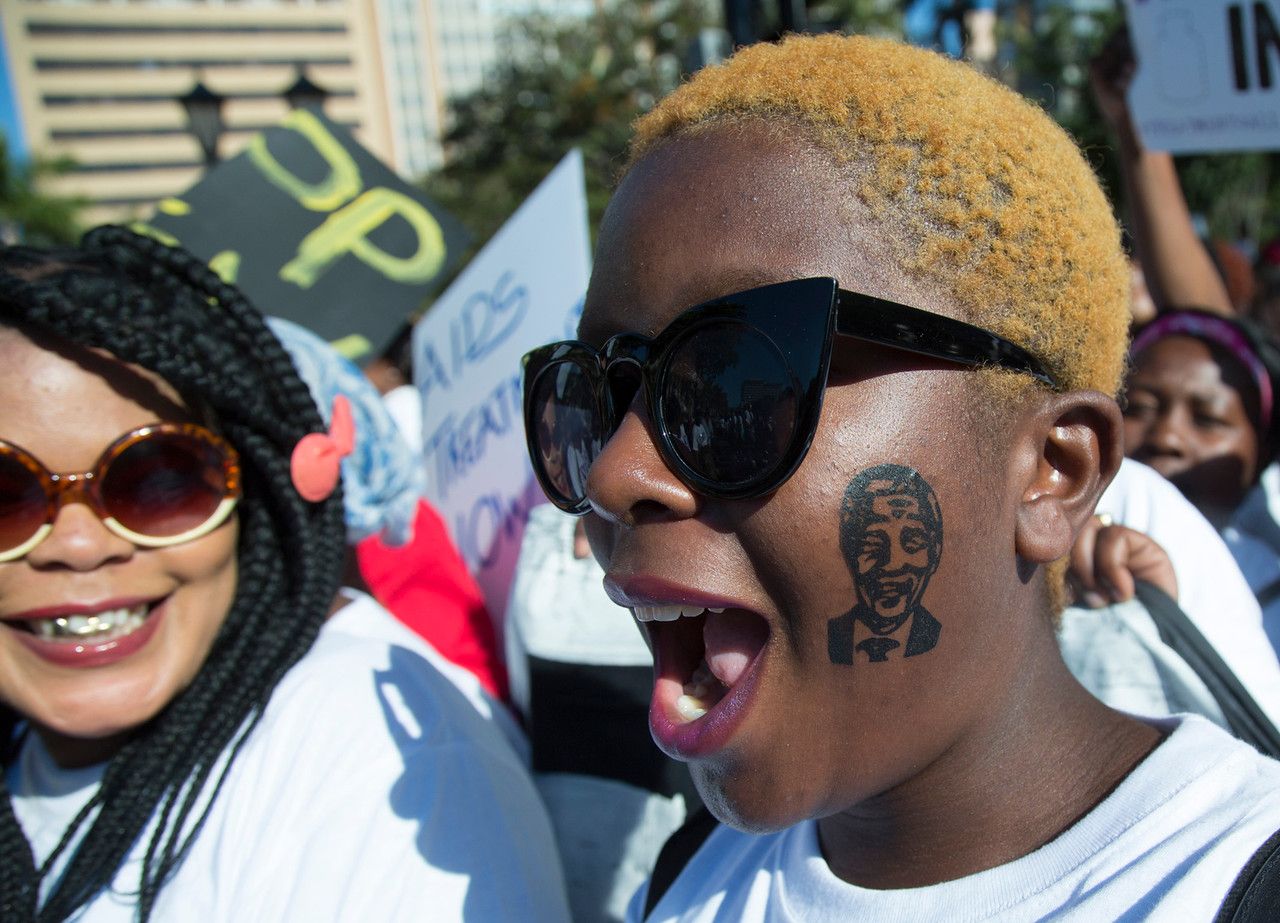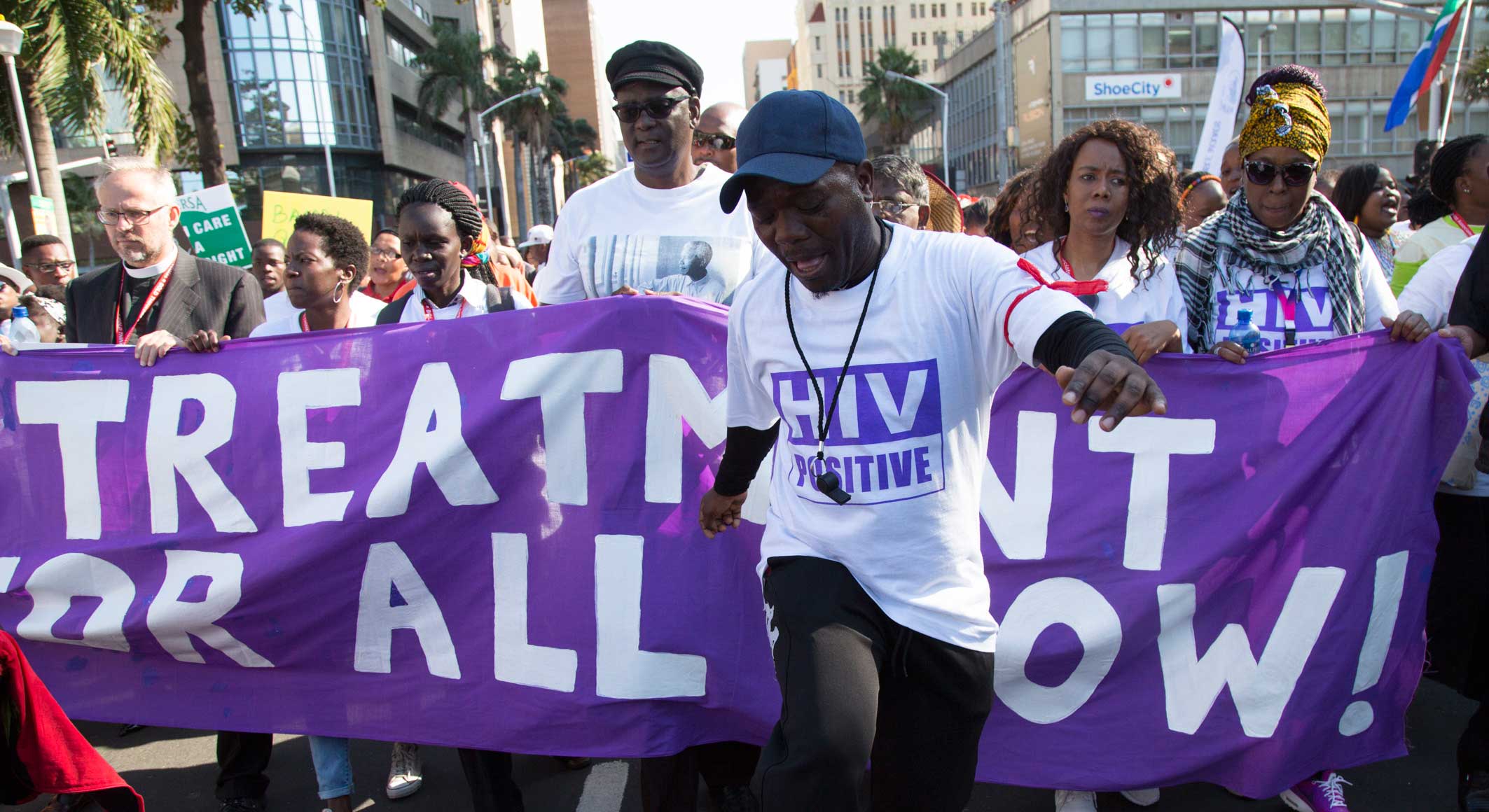- What We Do
- Agriculture and Food Security
- Democracy, Human Rights and Governance
- Economic Growth and Trade
- Education
- Ending Extreme Poverty
- Environment and Global Climate Change
- Gender Equality and Women's Empowerment
- Global Health
- Water and Sanitation
- Working in Crises and Conflict
- U.S. Global Development Lab
<


August 2016
AIDS 2016
Bringing together government officials, thought leaders, activists, researchers, and civil society, the International AIDS Conference (AIDS 2016) is the largest convention on any global health or development issue, specifically aimed at fighting HIV and AIDS. This year, AIDS 2016 returned back to Durban, South Africa, where it convened in 2000, to re-establish our commitment and create a path forward to achieving an AIDS-free generation. The U.S. Agency on International Development’s Office of HIV/AIDS (OHA) was pleased to take part in the conversation on the ground and highlight our work in fighting this epidemic. Read on to learn more about the conference and OHA’s contributions to AIDS 2016.

Ambassador Deborah Birx, U.S. Global AIDS Coordinator, speaks at PEPFAR Annual meeting in Durban, South Africa Credit: International AIDS Society/Steve Forrest/Workers' Photos
Major Announcements
Provisional Winners for PEPFAR’s DREAMS Innovation Challenge Announced
On June 18, the U.S. President's Emergency Plan for AIDS Relief (PEPFAR), along with Janssen Pharmaceutica NV and ViiV Healthcare, announced 56 provisional winners in 10 sub-Saharan African countries as part of the $85 million DREAMS (Determined, Resilient, Empowered, AIDS-free, Mentored, and Safe) Innovation Challenge. The winners selected will implement innovative solutions in DREAMS districts, across all DREAMS countries and Challenge focus areas. The top three implementation countries – Kenya, South Africa, and Uganda – account for 64 percent of the winners. Of the winners, 18 percent will provide a bridge to employment for adolescent girls and young women; 23 percent will strengthen capacity of local organizations to deliver services; and 9 percent will apply data to increase the impact of HIV and AIDS interventions. The DREAMS Innovation Challenge will accelerate progress toward the DREAMS target of achieving a 40 percent reduction in new HIV infections among adolescent girls and young women in the highest-burden areas of 10 sub-Saharan African countries by the end of 2017.
UNAIDS Releases 90-90-90 Progress Report
UNAIDS Executive Director, Michel Sidibé, launched the 90-90-90 Progress Report [PDF, 1.2MB] two years after the 90-90-90 targets were unveiled at the last IAS conference in Melbourne, Australia. The progress report highlights the geographic areas where countries are on track to meet the 90-90-90 targets, while also discussing areas for future improvement.
UNAIDS Launches 10 Fast-Track Commitments to End AIDS by 2030
In conjunction with AIDS 2016, UNAIDS launched the 10 Fast-Track Commitments to End AIDS by 2030 [PDF, 48KB] on July 18. The Fast-Track Commitments are drawn from the 2016 United Nations Political Declaration on Ending AIDS, which was adopted by United Nations Member States at the 2016 United Nations General Assembly High-Level Meeting on Ending AIDS and the UNAIDS 2016–2021 Strategy. The Fast-Track Commitments are intended to help guide us closer to the Fast-Track goals: 1) Reducing new HIV infections to fewer than 500,000 by 2020; 2) Reducing AIDS-related death to fewer than 500,000 by 2020; and 3) Eliminating HIV-related stigma and discrimination by 2020.
Inaugural Recipients of The LGBT Fund Announced

Sir Elton John and Prince Harry speak at AIDS 2016 Special Session, "Ending AIDS with the Voices of the Youth: How Stigma and Discrimination Affect Key Populations." Credit: International AIDS Society/Rogan Ward
The Elton John AIDS Foundation and PEPFAR announced the first two recipients of The LGBT Fund, which are the International HIV/AIDS Alliance (The Alliance) and the Global Forum on MSM & HIV (MSMGF). These partners will administer small grants and provide key technical expertise addressing stigma and discrimination through innovative and community-led approaches in sub-Saharan Africa and the Caribbean. More information on the announcement is available here.
Findings from CAPRISA Tenofovir Gel Study Revealed
For the first time, data from the Centre for the AIDS Programme of Research in South Africa (CAPRISA) Tenofovir Gel Study shows a link between specific vaginal microbiomes and an increased risk of HIV infection, as well as an interference with PrEP. As noted by the Director of the U.S. National Institute of Allergy and Infectious Diseases, Dr. Tony Fauci, these findings open the possibility of manipulating the vaginal microbiome to help head off HIV infections in vulnerable young women. Read more information about the study.
Funding Analysis Reveals a Decline in Resources for Global AIDS
The AIDS Vaccine Advocacy Coalition (AVAC) shared preliminary findings that showed investment in biomedical HIV prevention research and development (R&D) has significantly declined from the last fiscal year. Led by AVAC in partnership with the International AIDS Vaccine Initiative (IAVI) and UNAIDS, the Resource Tracking for HIV Prevention R&D Working Group (RTWG) reported that funding for HIV prevention R&D decreased from $1.26 billion in 2014 to $1.18 billion in 2015 and that overall funding has remained flat for more than a decade. Read the full report.

A musical performance, “The Return of King Shaka to the Modern Day South Africa,” takes place on the Global Village Main Stage at AIDS 2016. Credit: International AIDS Society/Rogan Ward
U.S. Government Presence at AIDS 2016
- Check out the Facebook Live Session with OHA Director David Stanton as he discusses stigma, discrimination, PrEP, and microbicides.
- USAID’s Office of HIV/AIDS and our partners had a significant presence at the conference, which is highlighted in the USAID at AIDS 2016 Conference Book and housed on our AIDS 2016 website.
- Watch: Amb. Deborah Birx Gives a Tour of the U.S. Government Booth at AIDS 2016
- In an effort to make unheard voices heard, the USAID-funded OPTIONS Consortium project and The World Health Organization co-sponsored two workshops at AIDS 2016 that offered a forum for PrEP and dapivirine ring users to share their thoughts, challenges, and needs regarding their sexual and reproductive health. To learn more about what was shared, read the OPTIONS blog, which was the feature story in this month’s In Focus: End HIV for Her e-newsletter.

Thousands of activists march to the International AIDS Conference in Durban as part of the Treatment Action Campaign (TAC) Credit: International AIDS Society/Rogan Ward
Explore More:
Watch
Recap Event
- Outcomes from the Durban International AIDS Conference with Chris Beyrer, Deborah Birx and Jennifer Kates
AIDS.gov Livestreams
- We’re Stronger When We Work Together: Dr. Wolitski Shares Closing Thoughts from AIDS 2016
- Dr. Fauci and Dr. Wolitski Discuss Highlights of AIDS 2016
- CDC’s Doctors Hader and McCray Discuss Developments from AIDS 2016
- White House’s Dr. Lansky Shares Perspectives from AIDS 2016
IAS AIDS 2016 YouTube Videos
- Session video recordings on the AIDS 2016 YouTube channel (ongoing updates)
- Prince Harry Attends AIDS2016
- "IAS Global Strategy Towards an HIV Cure 2016" Press Conference
- South Africa Grandmothers Gathering March
Other Relevant Videos
Listen
NPR Podcasts
Read
AIDS 2016 Round-Ups
- Return to Durban – Four-part Q&A with IAS President Chris Beyrer
- AIDS 2016 Daily Reviews
- AIDS 2016: Seven Lessons
- AVAC Dispatches from Durban at AIDS2016
- Scientific Highlights from AIDS2016
- Snapshots of UNITAID at IAS 2016
- What’sUpHIV Blog Live from AIDS2016
- Peds/PMTCT Daily Durban Dispatches
Other Relevant Articles
- South Africa’s Latest Weapon against HIV: Street Dispensers for Antiretrovirals –The Guardian, July 17, 2016
- “A Cure for AIDS Is No Longer Unthinkable” – The Washington Post, July 16, 2016
- AIDS 2016: Partners Project Demonstrates Preventive Power of Antiretroviral Treatment– Science Speaks, July 26, 2016
- AIDS 2016: SEARCH for HIV, Links to Care Outstrips UNAIDS Goals in Two Years – Science Speaks, July 25, 2016
- The World Spent $1 Billion Less on AIDS, Jeopardizing Decades of Progress – The Washington Post, July 25, 2016
- IPM’s Dapivirine Ring May Offer Significant HIV Protection When Used Consistently, New Data Analyses Suggest – International Partnership for Microbicides, July 18, 2016
View

![]()
Activists call for "Treatment for All Now". Civil society participation was a critical component at the International AIDS Conference in Durban. Credit: International AIDS Society/Rogan Ward
It is clear that in order to achieve the lofty global goals of creating an AIDS-free generation and ultimately achieving an end to the HIV and AIDS epidemic, an incredible amount of work still remains. But through partnership, strategically leveraging investments, innovations in research, service delivery, and care, and harnessing the collective power of advocates and civil society, hope to end the HIV and AIDS epidemic remains. We look forward to reconvening at the AIDS 2018 Conference and sharing what progress has been made.
Send Us Your Ideas!
We want your topic suggestions for blogs, success stories, videos or other media that highlight and tell the story of your organization's work under the U.S. President's Emergency Plan for AIDS Relief (PEPFAR). We love featuring our partners’ work in HIV and AIDS on the Agency’s Facebook, Twitter, YouTube, Flickr, and website platforms.
Contact OHA-Communications-Team@usaid.gov for more information.







Comment
Make a general inquiry or suggest an improvement.